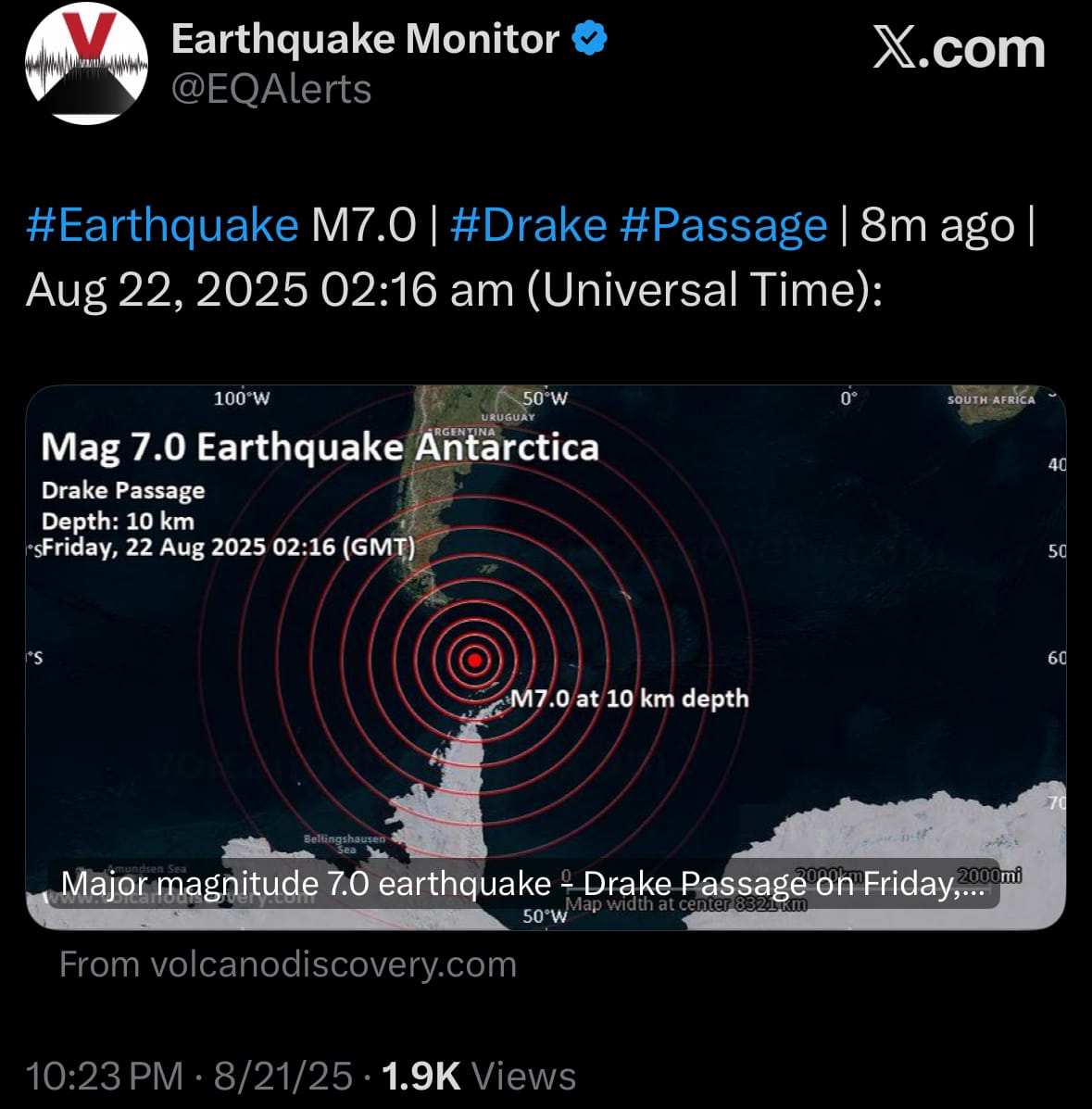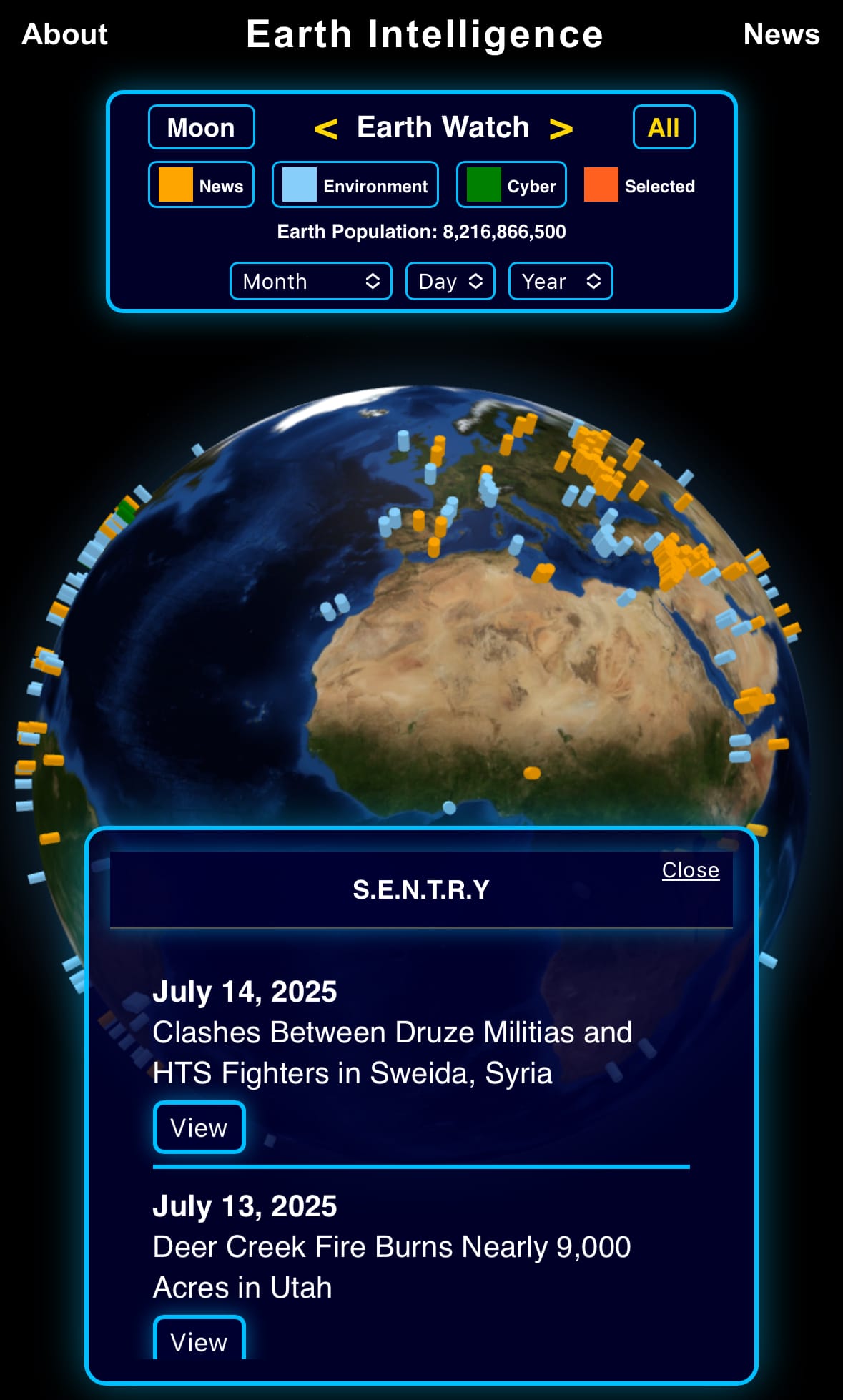Friday☕️

Economics & Markets:
- Today’s U.S. stock market:

- Today’s commodity market:

- Today’s crypto market:

Geopolitics & Military Activity:
- On August 21, 2025, U.S. Central Command (CENTCOM) reported that its forces carried out a targeted raid on August 19 in Atimah (also known as Atmeh), a town in northwestern Syria's Idlib province near the Turkish border, resulting in the death of a senior ISIS official who served as a key financier and planner of attacks in Syria and Iraq. The unnamed Iraqi national, married to a French citizen and viewed as a potential future ISIS leader in Syria, was killed while trying to escape during the operation, which involved U.S. helicopters, drones, and coordination with local Syrian forces to establish a perimeter; the status of his wife is unclear, and no U.S. personnel were harmed.

- The individual had broad connections within the ISIS network, presenting risks to U.S. and Coalition forces as well as the new Syrian government, with CENTCOM Commander ADM Brad Cooper stating that operations against ISIS terrorists would continue relentlessly to secure the group's enduring defeat and protect the U.S. homeland. It fits into CENTCOM's broader efforts to target ISIS remnants, similar to past operations like the 2019 elimination of ISIS leader Abu Bakr al-Baghdadi in Idlib and his successor in Atmeh in 2022.

Environment & Weather:
- On August 22, 2025, at 02:16 UTC (evening of August 21 in many time zones), a magnitude 7.5 earthquake struck the Drake Passage, a remote body of water between the southern tip of South America and Antarctica, at coordinates 60.186°S, 61.821°W, with a shallow depth of 10.8 km. Monitored by the U.S. Geological Survey (USGS), the quake was initially reported as magnitude 8.0 but revised downward after further analysis, occurring along the seismically active boundary of the Scotia Plate and Antarctic Plate. This event is classified as major, capable of causing significant damage in populated areas, but its epicenter was approximately 710 km southeast of Ushuaia, Argentina, and over 270 km northwest of the nearest Antarctic research stations, with no immediate reports of structural damage or casualties due to the isolated oceanic location.

- Although the Pacific Tsunami Warning Center briefly issued a tsunami advisory for coastal areas of Chile and parts of Antarctica following the quake, it was quickly canceled after evaluations showed no significant wave generation, with minor tidal fluctuations of about 20 cm recorded at stations like Akademik Vernadsky in Antarctica, dissipating within hours. Compared to other notable earthquakes, this event is less impactful than the 2010 magnitude 8.8 Maule quake in Chile, which caused widespread destruction and tsunamis, or the 1960 magnitude 9.5 Valdivia event, the strongest on record; however, it highlights ongoing tectonic activity in the region similar to frequent quakes in the Pacific Ring of Fire, with aftershocks including a magnitude 4.9 shortly after, prompting continued monitoring by global seismic networks for potential further activity.
Space:
- On August 21, 2025, at 11:50 p.m. ET (03:50 UTC on August 22), SpaceX conducted a successful launch of the USSF-36 mission from Launch Complex 39A at NASA's Kennedy Space Center in Florida, placing the U.S. Space Force's X-37B Orbital Test Vehicle into orbit for its eighth mission, known as OTV-8. The Boeing-manufactured reusable spaceplane, managed by the Space Force's Rapid Capabilities Office, was launched for the first time on a Falcon 9 rocket, differing from earlier missions that used United Launch Alliance's Atlas V or SpaceX's Falcon Heavy. The Falcon 9's first-stage booster, identified as B1092 on its sixth use, separated after launch and landed at Landing Zone 2 at Cape Canaveral Space Force Station approximately eight minutes later, while the second stage proceeded to orbit and confirmed spacecraft separation soon after. This marks the fourth flight for this particular X-37B vehicle (tail number 1), which is set to perform classified experiments in low Earth orbit, such as testing laser communications, quantum navigation, and related technologies aimed at improving space awareness and operations.

- The OTV-8 mission is projected to span several months to potentially years, adding to the program's total of over 3,774 days in space from previous flights, focusing on assessing reusable spacecraft for long-duration uncrewed operations. Although mission specifics are not publicly detailed, they involve evaluating systems for possible future military uses, including quick response capabilities and in-orbit adjustments, with the vehicle planned to return through an autonomous landing at a facility like Kennedy Space Center or Vandenberg Space Force Base. This event was SpaceX's 101st Falcon 9 launch in 2025 and contributes to the U.S. Space Force's work on space-based assets for national security purposes, in a global context where other countries, such as China with its Shenlong spaceplane, are developing comparable experimental vehicles.

Statistic:
- Largest assets on Earth by market capitalization:
- Gold: $22.650T
- 🇺🇸 NVIDIA: $4.267T
- 🇺🇸 Microsoft: $3.748T
- 🇺🇸 Apple: $3.337
- 🇺🇸 Alphabet (Google): $2.420T
- 🇺🇸 Amazon: $2.367T
- Bitcoin: $2.250T
- Silver: $2.140T
- 🇺🇸 Meta Platforms: $1.856T
- 🇸🇦 Saudi Aramco: $1.528T
- 🇺🇸 Broadcom: $1.362T
- 🇹🇼 TSMC: $1.179T
- 🇺🇸 Berkshire Hathaway: $1.054T
- 🇺🇸 Tesla: $1.032T
- 🇺🇸 JPMorgan Chase: $801.46B
- 🇺🇸 Walmart: $781.76B
- 🇨🇳 Tencent: $694.82B
- 🇺🇸 Visa: $667.08B
- 🇺🇸 Oracle: $654.90B
- 🇺🇸 Eli Lilly: $636.32B
- 🇺🇸 SPDR S&P 500 ETF Trust (SPY): $583.29B
- 🇺🇸 Mastercard: $535.10B
- Ethereum: $517.06B
- 🇺🇸 Netflix: $512.54B
- 🇺🇸 Exxon Mobil: $465.67B
History:
- Parachute technology traces its roots back to ancient concepts of controlled descent. The earliest recorded designs date to the Renaissance, with Leonardo da Vinci sketching a pyramid-shaped parachute in the late 15th century. Though never built during his lifetime, his design showed remarkable foresight. By the early 17th century, Croatian inventor Fausto Veranzio produced a practical prototype, testing a similar device by reportedly leaping from a tower in Venice. These early attempts were rudimentary, constructed from wood, fabric, and rope, but they laid the conceptual foundation for parachutes as a means of slowing descent and ensuring survival during falls.
- The 18th and 19th centuries brought critical refinements. In 1783, Louis-Sébastien Lenormand conducted a successful parachute demonstration in France, coining the term “parachute.” Shortly after, balloonists adopted parachutes as safety devices, with André-Jacques Garnerin famously making the first successful parachute jump from a hot air balloon in 1797. Throughout the 19th century, improvements in materials, such as silk, allowed parachutes to become lighter and more reliable. By the early 20th century, parachutes were standardized for military and aviation use, with widespread deployment during World War I and II. Today, parachutes are used in diverse ways beyond military and emergency aviation: recreational skydiving, base jumping, and extreme sports have popularized them as tools for adventure, while space agencies employ parachutes in spacecraft landings to slow re-entry vehicles, including Mars rovers. From da Vinci’s sketches to modern aerospace, the parachute has evolved into a critical technology for safety, exploration, and human experience.
Image of the day:

Thanks for reading!
Earth is complicated, we make it simple.
Click image to view the Earth Intelligence System:



Support/Suggestions Email:
earthintelligence@earthintel.news




